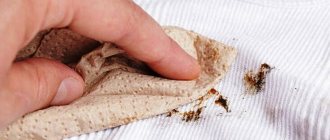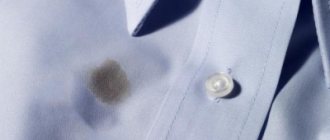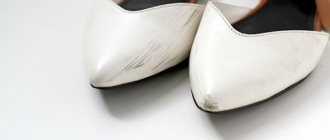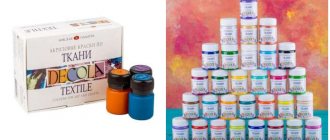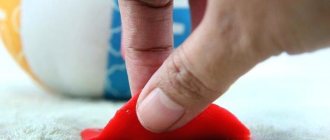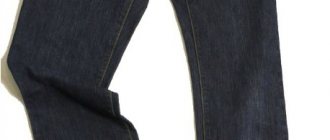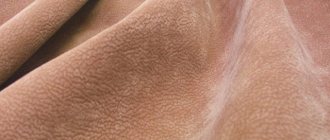Construction and installation work involves the use of sealing materials. Sealant is a substance based on polymers, in particular rubber. It is plastic, durable, waterproof, resistant to deformation, and transmits heat.
In contact with the surface being treated, it provides strong adhesion. Sealing plumbing fixtures, windows, doors, grouting joints, sealing coatings - this is an incomplete list of the applications of sealant.
Often, at home, careless use of sealing compounds is the cause of damaged clothing. A few simple secrets will help solve the problem with minimal losses.
The cleaning method depends on the type of base.
There are several types of sealant base. Namely:
- silicone;
- acrylic;
- polyurethane;
- butyl;
- bituminous.
The difference is in the polymer material underlying the lubricant. Silicone occupies a special place among sealing substances, which is more often used in everyday life. These are one-component mixtures, immediately ready for use.
When choosing a method for cleaning grease from clothing, you need to pay attention to its chemical composition. For example, silicone sealant is divided into acidic and neutral in composition.
The acidic composition is not compatible with the alkaline substance. This type of stain can be removed from clothing using vinegar. Neutral sealant is removed using an alcohol-containing liquid.
Features of silicone sealant
Silicone sealant is an insulator made using a special technology based on rubber. The main properties of this material:
- water resistance;
- heat resistance;
- resistance to mechanical stress;
- durability.
Silicone is ideal if you need to seal cracks and joints when installing plumbing, fix tiles and other small parts; it performs not only sealing and fixing, but also waterproofing functions. But it is precisely because of these qualities that it is so difficult to remove from fabric.
Silicone-based insulators have excellent adhesive properties; they quickly penetrate the pores of any material they come into contact with, so after hardening it is very difficult to remove them without damaging its structure. But probably.
Over the years of using silicone sealants in construction and everyday life, people have become adept at removing traces of it from any textile products. Experts are ready to share their secrets on how to remove silicone waterproofing from fabric using improvised means.
Cleaning method No. 1
The acid base that has left a mark on clothing is eliminated with a solution of acetic acid (70%). Moisten the damaged tissue generously and leave for half an hour. Then remove the silicone with a dry, clean cloth. The only negative is the persistent vinegar smell, which disappears after repeated washings.
Important! When working with acid, take precautions: use rubber gloves, a respirator, and goggles.
Special washes
If you have time and opportunity, you can buy special products for removing silicone sealant - Antisil or Penta-840. They are not cheap, but they do an excellent job of removing traces of adhesive. When using them, you must strictly follow the instructions.
It doesn’t matter if yellow stains appear on your down winter jacket after an unsuccessful wash. It happens that you have to wash vomit stains from upholstered furniture or clothes, and it is very difficult to clean a mattress from red stains and the smell of urine, but there are methods. You can, Removing stains is always a long and labor-intensive process, especially if it concerns traces of food or
Cleaning method No. 3
When the trace of the sealant is noticed in time, the stretching method will come to the rescue. The fabric stretches in the place where there are traces of sealant. The resulting film is easily removed if you pry it off with a sharp knife or spatula.
A thicker layer of substance is easier to clean. The downside is that it leaves a greasy stain. In this case, if the quality of the fabric allows, you should use bleach. Or regular powder.
How can I remove a fresh sealant stain before it hardens?
If the contamination is a few minutes old and it is still fresh, then eliminating the problem is much easier. You don’t even need to use any chemicals, just freeze or quickly wipe off the dirt (the second option refers to mechanical cleaning).
It is better not to hesitate, since dried sealant is very difficult to remove, to the point where you will have to get rid of clothes. Some types of fabric cannot be completely cleaned; you can only minimize the damage.
It is much easier to wipe fresh sealant off clothes than dried sealant, which very often cannot be completely removed.
It is strictly not recommended to immediately try to wash or soak contaminated clothing - the result will be minimal, and the stain may grow . In addition, if you wash it incorrectly, you can further damage the product.
Wipe quickly
Recent sealant contamination can be easily remedied if you act immediately. While the sealant is in a liquid state, you need to wipe it off with a clean, dry cloth. You just need to wipe off the sealant as carefully as possible so as not to smear it even more and prevent your clothes from becoming saturated with it.
No matter how perfectly you work, a small amount of sealant will still get into the fabric, and this is a problem. The fact is that sealant stains are as corrosive as oil stains, so even a powerful detergent may not be effective.
If the ingrained sealant has not yet hardened, you can try to carefully cut off the top layer of fabric with a sharp knife. You need to move the knife blade over the surface of the material to leave as small a layer of sealant as possible.
Use only a sharpened knife, as if you use a dull one and apply too much force, you can irreversibly damage the clothing.
Freeze and Scrape
Sealants for indoor use do not tolerate low temperatures well, which is why such sealants are called indoor sealants. Try to fold the product compactly and then put it in the freezer for several hours until completely frozen.
Once frozen, remove clothing. It will be very dense, which is what we want, as this is the ideal conditions for scraping off the compacted sealant. You can clean it with a knife or any other available tool, including keys.
If the product is too large and does not fit in the freezer, apply any frozen item to the stained area. It can be ordinary water in a plastic bottle. Unfortunately, not in every case you will have something on hand to freeze the stain.
Cleaning method No. 4
The preferred way to remove unwanted stains is to use acetone or white spirit. For this:
- Cover the fabric surface to be treated with a cloth soaked in any of these liquids.
- Place four layers of paper (newspaper, notebook paper) on top of a wet rag.
- Iron the entire structure with a hot iron.
- After this procedure, the sealant lubricant can be easily removed by washing.
It is important not to overheat the fabric. You need to monitor the temperature of the iron to avoid damage to your clothes.
Features of removal from outerwear at home
You need to choose methods for removing sealant from outerwear depending on the type of fabric:
- You can remove the adhesive from a cotton jacket with gasoline or turpentine. Then be sure to wash the item.
- Wool withstands purified turpentine better.
- A leather jacket is cleaned mechanically by first placing it in the freezer.
If the item cannot be washed or if it loses color due to aggressive liquids, then it is better to have it dry cleaned.
Some useful tips
To clean clothes from traces of sealant, special household chemicals are sold: Penta-840, ANTISIL. You must act according to the instructions. It is advisable to first test the substance on a small area of fabric.
The most affordable way is to freeze the tissue. When exposed to cold temperatures, silicone hardens and is then easily removed from the surface of clothing.
More delicate fabrics can be washed with baby soap. Lather the stain generously and leave for 30-40 minutes. After softening the hardened composition, wash the item in warm water. This procedure can be repeated several times until the sealant completely disappears.
A non-standard solution would be to use a brake product. Nevertheless, this is a very effective solution. It is enough to spray it on the fabric, after placing a dense cloth under the stained area. After treatment, hand wash clothes.
Removing fresh silicone stains
When sealant gets on wardrobe items, it is very important that it does not have time to harden. If you act promptly and follow all cleaning rules, not a trace will remain of the stain in just a couple of minutes. It is necessary to pull the fabric with your fingers in the area of contamination, and you can remove the silicone from the clothing either with a knife or another sharp object (an awl, a needle), simply by picking up the viscous substance.
After removing the sealant in this way, a greasy mark may remain on the material. Regular washing of the item in a washing machine or by hand will help remove it. If the stain remains, you need to use a laundry stain remover and wash the clothes again.
If sealant has recently come into contact with the fabric, another method will help. It is enough to put the item in the freezer or outside at sub-zero temperatures, wait several hours until the composition hardens, then remove it by picking it up with a sharp object. Clothes should be washed to remove grease stains.
Important! The thicker the silicone trace that gets on the material, the easier it is to remove it this way.
Need to remember
The task of the sealant is to protect the integrity and isolate the required structure or connections from moisture. It initially has a paste-like substance that hardens in air. Moreover, the longer the contact with air, the stronger the adhesion. Therefore, it is important to immediately remove any traces of sealant.
When choosing a sealant for your home, you should pay attention to the packaging. Aluminum tubes and “cartridges” are easier to use at home. A special applicator (“gun”) is convenient for precise application of the composition. And the chance of getting your clothes dirty is minimized.
Review of professional products
If other methods prove ineffective, professionally used products come to the rescue. They will clean surfaces of silicone residues with a guaranteed high result.
Penta-840
Refers to powerful means, washes, which make it equally easy to cope with the consequences of unsuccessful sealing, dissolve silicone residues, and renew seals. Works with any type of surface. It is first recommended to verify the effect of Penta by applying a small amount of the product to the silicone compound.
Quilosa Limpiador
Composition in an aerosol can. Designed for processing (cleaning) tools and equipment after contact with silicone mixtures, removing fresh and hardened sealant. The product is convenient to apply by spraying it over the surface to be treated.
Permaloid
Another liquid composition, a mixture of highly volatile organic solvents. They are used for professional cleaning of silicone from plastic surfaces, since it is inert to plastics. Non-toxic, does not affect the destruction of ozone compounds. Release form: 5-liter canisters.
Lugato Silicon Entferner
Special cleaning paste in 80 ml tubes. It has an equally strong effect on fresh and old silicone layers. Before use, it is recommended to remove the material to a thickness of 2 millimeters. The composition is applied to the surface and left for 1 to 5 hours. The softened silicone is then mechanically removed with a knife or scraper.
Silicone Remover
Gel cleaner for treating dry, pre-cleaned layers of silicone. It is recommended to work with gloves and well-ventilated areas. If water gets in, the effectiveness of the composition decreases.
